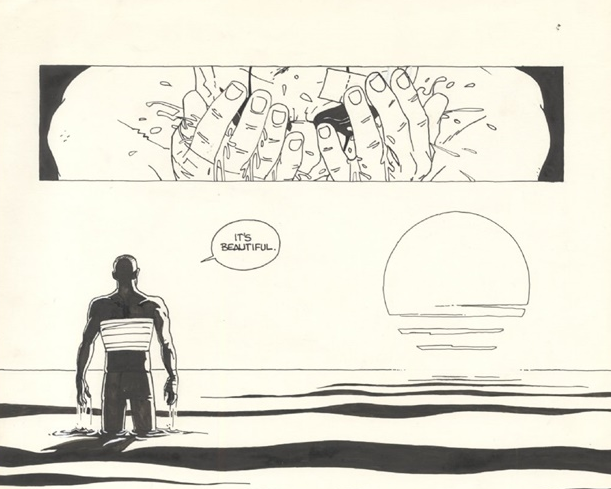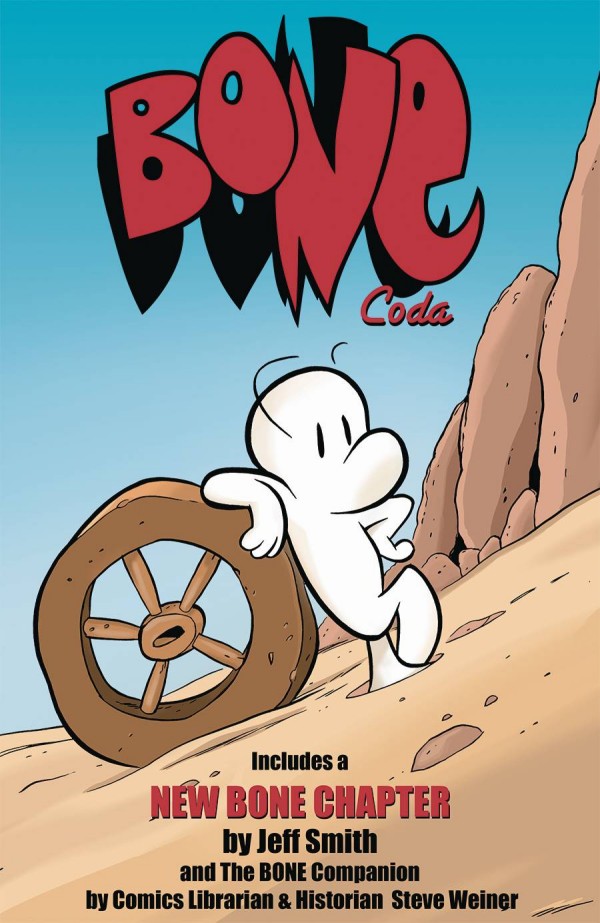Alone
by Christophe Chabouté
published by Gallery 13
Simon & Schuster
Every now and again I find myself looking backward to make sure I am still alone. Come to think of it, I sometimes even do this in a crowded room full of people who would give me the shirts off their backs. Occasionally, I even intentionally drive myself in the opposite direction of social interaction to simply be alone to do something where no one else is. I did this very thing one afternoon late last weekend; picked up a copy of Christophe Chabouté’s stunning masterpiece Alone and read it in one sitting. All just to avoid social interaction for an afternoon.This book, all 368 pages of it, is in large part a fairytale of solitude. Originally published in 2008, a French critically acclaimed piece of literature found itself republished in English format in 2017. This story is a critique of aloneness and what inhibits our motivation to avoid it, or rather to escape it. Christophe tells his story in Alone as the panels drift from page to page, slowly so that the feeling of mobility is nearly gone bringing all perception of movement entirely to what he has drawn. Reading this book, as it finds you losing yourself in its detail, transformation draws all sense of isolation into a complete consumption of the story. This was a wild ride for me, that one afternoon, when I chose to retreat inward and self-meditate by enjoying what has become one of my most lasting and enjoyable stories told in any format.
“IMAGINATION n. The ability to form a mental image of fiction or perceived objects or concepts not actually present to the senses. The ability to invent, create, or concoct.”
Before the story begins Christophe chose to preface the cognitive preparation of our journey alongside him with a defined meaning of how this story was brought to us at all, through imagination. Recognizing that this word was on the initial page suggests that it was also at the forefront of Chabouté’s psyche during the conception of the story and throughout. Apparent as it may seem by this, it is also proven by the several ways in which he encourages reader anticipation, interaction, character empathy, and celebration by way of simple illustrations and designs. This book has few words but it has much to say.
To continue with this book the story begins with a lighthouse. A lighthouse and a seagull. A lighthouse, a seagull, and a supply boat. Not much is known up front of the supply boat outside its observed duties to deliver small amounts of unspecified supplies to the lighthouse by two mysterious, but dutiful fisherman. Much is left to question the reasoning for any of this activity and one, but not the other, fisherman develops empathetic urgency to understand the why.
A significant portion of the story is introduced through the perception of these fisherman and it remains a large mystery through nearly a quarter of this book’s length. During the rather lengthy introduction there are moments you will find yourself flipping back several pages to find new meaning and appreciation of past pages as the story moves forward. For the sake of containing it’s purpose I will allow for the proud moment of piecing those parts together for you to have as your journey within the pages progresses.
It is most obvious that this is a story of one who is isolated; the very first panel is of a single crashing wave, led eventually to the lighthouse. To the surprise of no one, the main narrative to Christophe’s Alone circles around one that in fact lives at this lighthouse. Here is the home to the Hermit who has never left. Understanding the how and the why drives this story forward, and it becomes duty for the persistent fisherman from the early pages of the book to help understand the right answers to seek without knowing the questions to ask beyond what is most obvious.
I haven’t a clue who might need to see this book next, but I am certain that it was meant to be in my hands, open, just before it was to get to whoever would follow. As I journeyed alongside Chabouté I was able to come to a relative understanding of what drives our temporary or periodic human desire for isolation. Our occasional nature to be alone with ourselves isn’t just a way to remove what we despise in the things we cannot bear, but it is also (if not more so) a way in which our imagination creates a place where we desire to be surrounded by once more. A literal hard reset of the soul.
This is a masterful piece of literary art and storytelling and it has permanently placed Christophe Chabouté as one of my favorite comic creators. The amount of telling in the story without using words is simply amazing and does not go unnoticed. Simply said, the opposite is actually true as I would find myself lost in a scene forgetting to turn pages. This is a quick read in the morning or a weekend study on self-care, all dependent of how you decide to digest the story. It’s an imaginative, heartfelt, and honest depiction of what it means to be human.. or, how to finally get to that place where it once again feels good to be human.
by: Sean Cohea
@argyleeater












